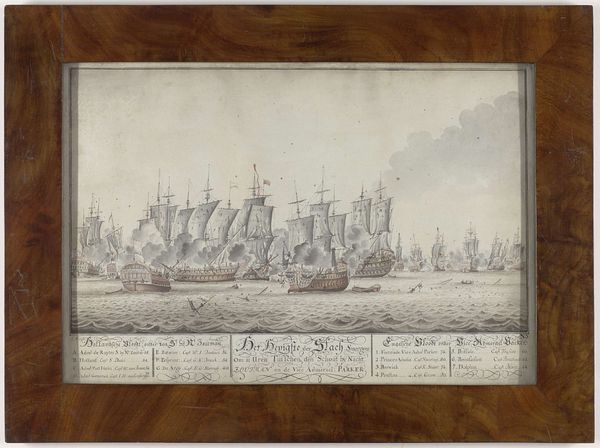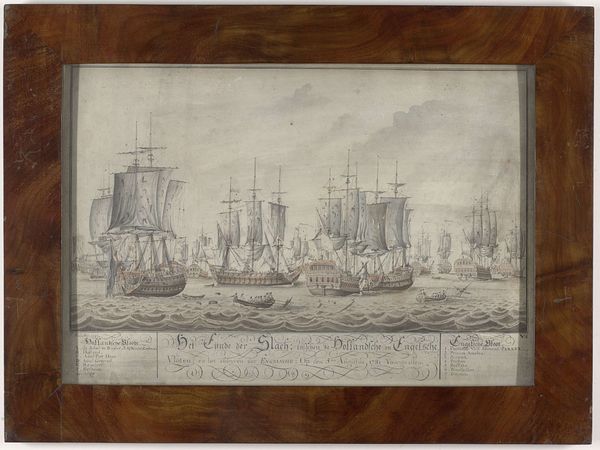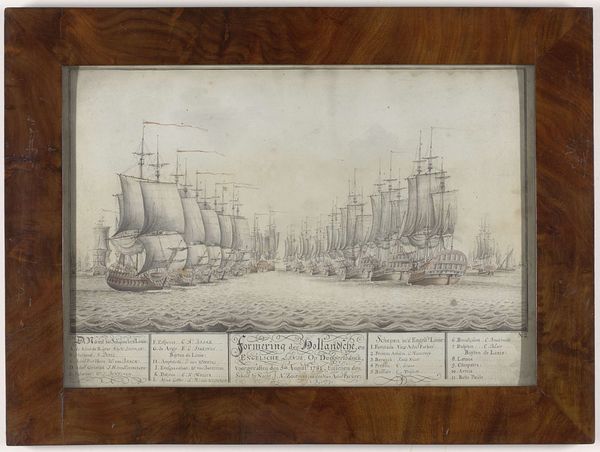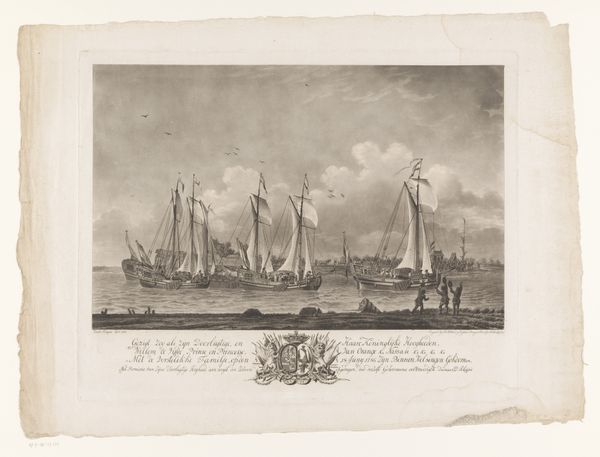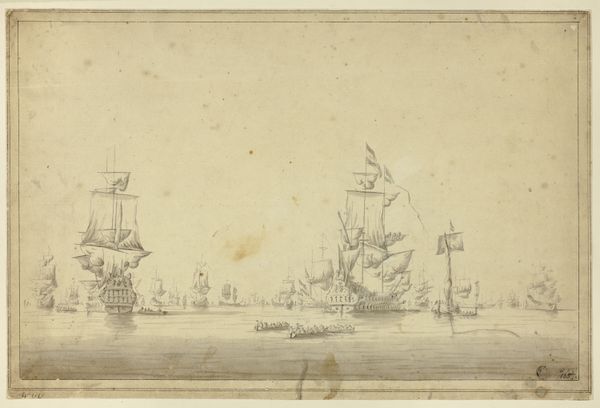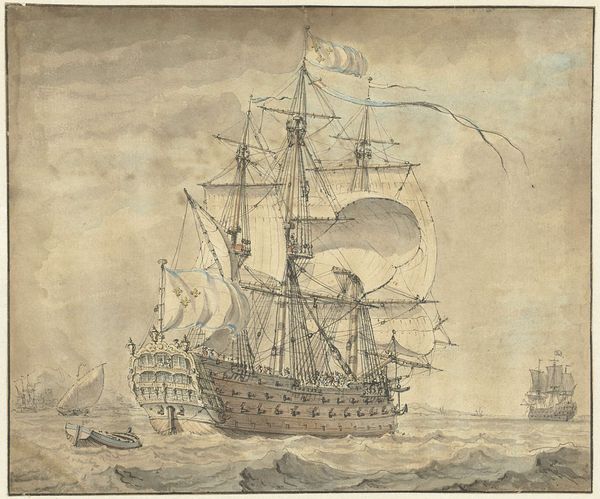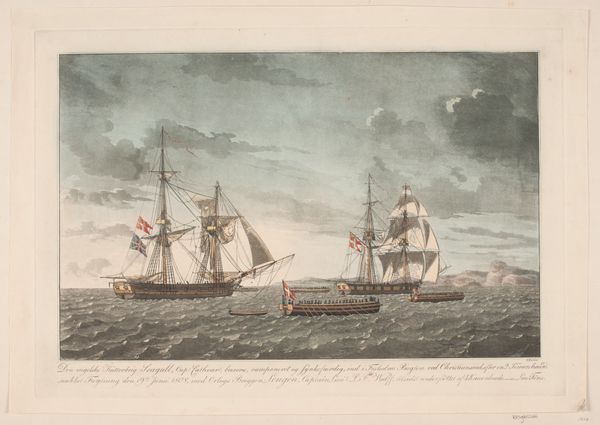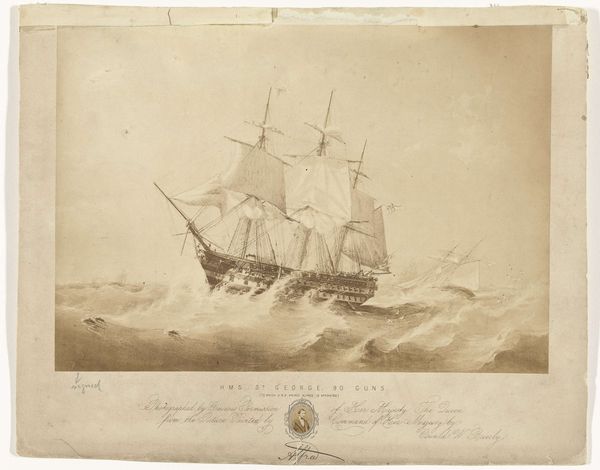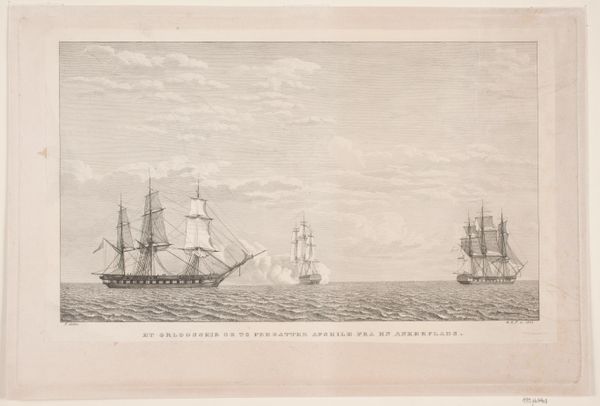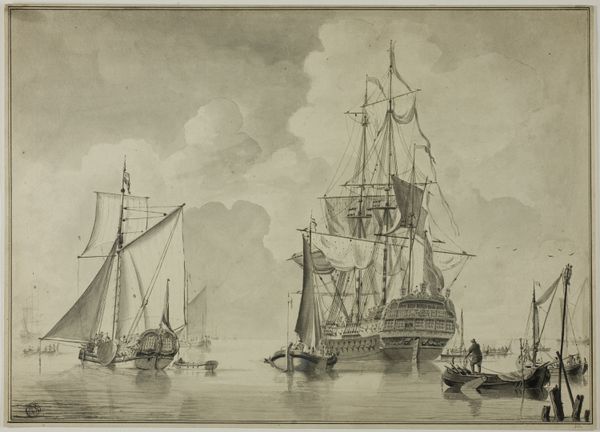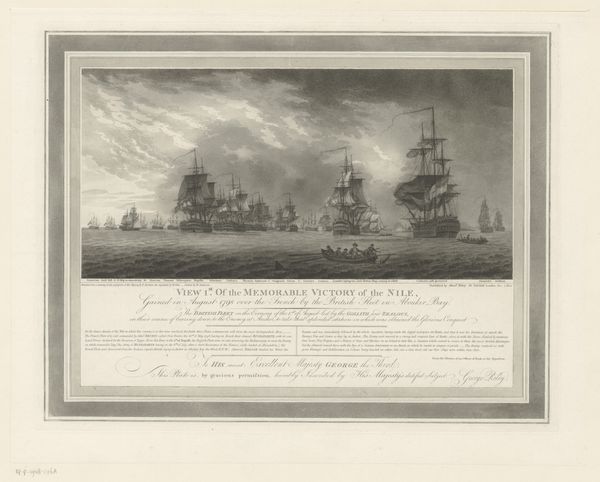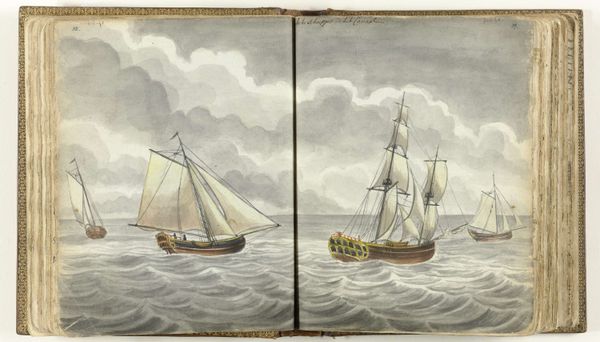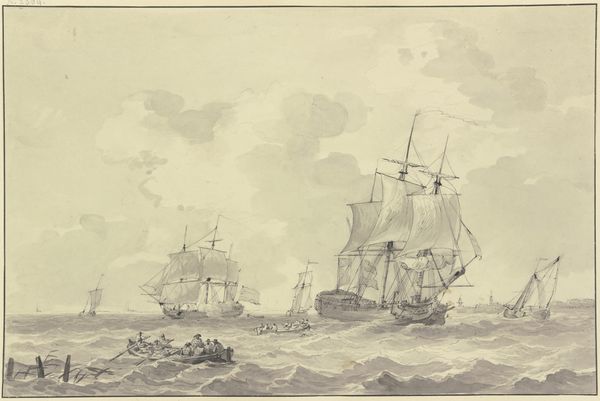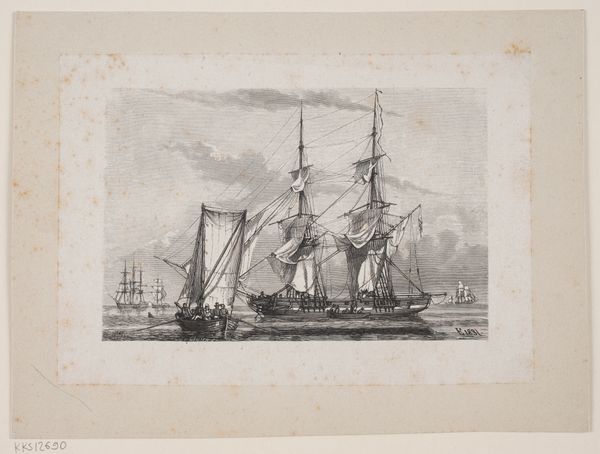
drawing, coloured-pencil, print, watercolor
#
drawing
#
coloured-pencil
#
dutch-golden-age
# print
#
landscape
#
watercolor
#
coloured pencil
#
watercolour illustration
#
genre-painting
#
history-painting
#
watercolor
Dimensions: frame height 48 cm, frame width 64.7 cm, frame thickness 2.1 cm, image height 29.2 cm, image width 50.4 cm
Copyright: Rijks Museum: Open Domain
Editor: So, here we have J. Weuyster's "The Sailing of the Dutch Fleet from Texel (19 July 1781)," made in 1783, a drawing with coloured pencil and watercolour that appears to depict a fleet of ships leaving port. It has such a calm, collected feeling to it, like a moment of stoic preparedness. What do you see in this piece, from your perspective? Curator: I see more than just ships sailing; I see the projection of Dutch power and mercantile ambition in a very specific historical context. This work places itself within the Fourth Anglo-Dutch War. It asks us to think about what the image is trying to obscure. Editor: Obscure? How so? Curator: Well, this is presented as this glorious moment, but we should consider it as part of a struggle for global dominance. It's also important to acknowledge the very real human cost, right? The forced labor that extracted the raw materials, and the exploitation inherent in colonial trade routes are rendered invisible, idealized as opposed to critically examined. How does this change your perception? Editor: It makes me think about what's not being shown – the human lives impacted by this projection of power. All the expense and all the raw materials... were these boats slave ships or part of that supply chain? Curator: Precisely. The piece reflects and reinforces certain ideologies tied to nationalism, mercantilism, and colonialism, encouraging us to celebrate the Dutch fleet uncritically. Editor: So by looking at the historical context and social impacts, we can start to unpack what the piece is really about, instead of taking its beauty at face value? Curator: Exactly. Considering the broader narrative allows us to engage critically with the art and understand its role in shaping perceptions. Editor: That's a powerful way to view it; I hadn't thought of it that way at all. Thank you!
Comments
No comments
Be the first to comment and join the conversation on the ultimate creative platform.
